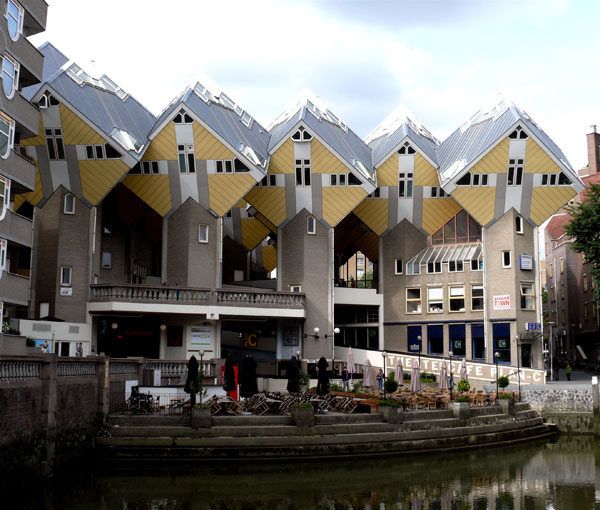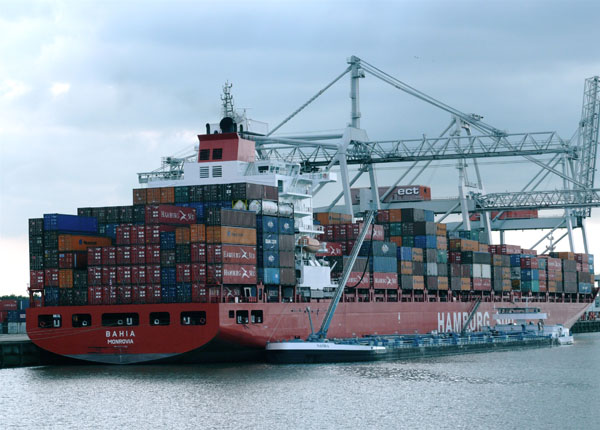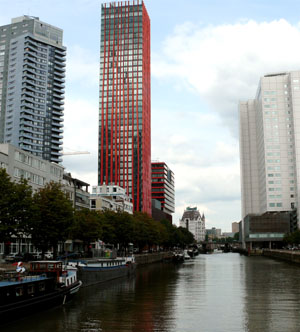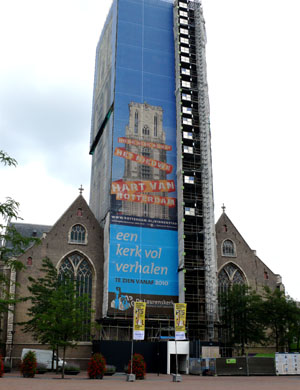ROTTERDAM – The elderly cabbie grumbles and throws up his hands in frustration as we hit another construction roadblock just outside this city’s central rail station.
“The entire city is under construction and it’s been that way for over 50 years,” snarls the old man.
It’s no secret that Rotterdam spent the latter half the 20th century trying to recover from the nightmare it endured during World War II, when, night after night, for months on end, Adolph Hitler’s air force rained bombs down on the city, which at the time was the biggest port in the world. Rotterdam was reduced to rubble, with only a few buildings left standing by the end of that horrific period.
Like the Phoenix, though, Rotterdam rose from the ashes to become Europe’s most modern and vertical city – but it literally had to be rebuilt from the ground up. By the beginning of the 21st century, though, most of what was constructed after the war that ended in 1945 had to be renovated or torn down for newer projects that would fit the city’s image as business capital of the Netherlands.
Which explains the continuous construction that upsets cabbies, but makes visitors like me truly appreciate how uniquely modern and different Rotterdam is in comparison to most of Europe’s stodgy, old cities.
However, even the residents of this ever-changing metropolis know they are the Rodney Dangerfield of Dutch cities - they don’t get much respect from arch rivals Amsterdam, The Hague, Maastricht or even Utrecht, the religious centre of this land-challenged country.

Above: Modern architecture makes Rotterdam unique in Europe.
“The only people who like Rotterdam are the people living in Rotterdam,” says Sjoerdieke Feenstra, an architectural student and proud citizen of this city of about 600,000.
There really is a lot to like about this sprawling city whose harbour remains one of the biggest and busiest in the world – Rotterdam ranks third behind Singapore and Shanghai, respectively, in the “Biggest Ports in the World” category.
Being the proud citizen she is, Sjoerdieke offers to accompany me on a short walking tour of Rotterdam, which offers a variety of modern building styles created by famous Dutch architects like Piet Blom (he designed Rotterdam’s famed Cube Houses) and Rem Koolhaas (the creator of the city’s ultra-modern Kunsthal Museum).
We don’t walk far before Sjoerdieke points out a Rotterdam architectural wonder – the Inntel Hotel where I’m staying.
“Look back,” the young student tells me as we cross the road to a spot where a memorial, commemorating lives lost at sea during World War II, stands overlooking the Maas River.
A canopy jutting out from the hotel’s roof is a striking feature and blends in beautifully with other architectural delights in this harbour area, like the fan-like Erasmusburg Bridge, the Euromast (a CN Tower lookalike) and the buildings that make up the Kop van Zuid, an area across the Maas where modern landmarks like the World Port Center, Montevideo (the highest residential tower in the Netherlands) and the Maastoren (the country’s tallest office tower) are all located.
It quickly becomes evident to me why Rotterdam is nicknamed the “Manhattan on the Maas.”
As we walk toward Museum Park, a lovely green space ,which houses several major museums, including the Kunsthal and the Boijmans van Beuningen - Rotterdam’s biggest art storehouse – my young guide tells me that the only major buildings left standing after 1945 were City Hall, the post office, the main cathedral (Laurens Church) and the Witte Huis (White House), Europe’s first high-rise which now sits in the shadow of the glass and steel forest that has grown up around it.

Above: Rotterdam remains one of the great seaport cities in the world.
The Boijmans van Beuningen is one of the most impressive museums in the world, exhibiting masterpieces by Monet, Degas, Picasso, Rubens, Rembrandt and Van Gogh, to name just a few. It also contains art and crafts dating back to the 14th century, along with lots of modern designs.
The biggest draw at the Kunsthal is the building itself. Koolhaas’ 1992 design allows visitors to get lost amidst angles and slopes and the free space journey he creates is truly remarkable.
We emerge from Museum Park into a residential area populated by mostly immigrants and ethnic restaurants.
“You can hear over 140 different languages in this city,” Sjoerdieke informs me as we enter a busy shopping district off Lijnbaan Street. “This was the first pedestrian shopping street in Europe”
As we exit Lijnbaan Street, Sjoerdieke directs my attention to a small canal, which sits off to the side.
“That’s one of the few canals left in a city that had as many canals as Amsterdam still has,” says Sjoerdieke. “And that’s also all that remains of the Rotter River, from where the name Rotterdam first came.”
Most canals and the river were covered over in the city’s rush to repair and modernize and now many residents, according to Sjoerdieke, would like to see some of the old canals dug up and used again.
We soon find ourselves standing in a square dominated by the Laurens Cathedral, officially known as the Grote of Sint Laurenskerk. It was built between 1149 and 1525 and is the only surviving late-Gothic building from the original medieval city of Rotterdam.
Markt Plein (Market Square), which sits directly behind the great church, is where the city’s outdoor market is held (Tuesdays and Saturdays) and according to Sjoerdieke the area is “very crowded” on market day.
Market Square, which leads to the Cube Houses, is getting a new addition, the ultra-modern Markthal, a giant multi-coloured tent-like residential structure which will also offer shopping in its open air concourse.


Above: Vertical Rotterdam is known as the Manhatten on the Maas.
Sjoerdieke, who appreciates modern designs like the Markthal, fears the new building may not blend in well with the tailgate market that has been held in the square for centuries.
“However, the Cube Houses don’t look out of place here,” says Sjoerdieke, who leads me up some stairs to the brightly-painted yellow homes perched atop concrete pillars.
The Piet Blom-designed homes, which opened to mix reviews in 1984, are located on Overblaak Street and the controversial architect made them unique by angling the cube of the conventional house 45 degrees. The 38 small cubes and two so-called “super cubes” that make up Blom’s project are now regarded as one of the most outstanding architectural achievements in the world.
As we walk back to the hotel, Sjoerdieke says Rotterdam’s distinct modern architectural zones, known as the Lloydquarter, Waterstad and Kop van Zuid, were made possible when the city decided to move its massive harbour out of the city centre and closer to the sea.
“That meant a lot of wonderful locations became available where these modern works of art could be built,” says Sjoerdieke, who points to some former warehouses on the opposite side of the Maas that have been preserved and transformed into chic apartments.
“They (the older buildings) contrast wonderfully with the new architecture, don’t you think?” asks the young student, who says architecture is the favoured course among students attending schools in Rotterdam and that “class sizes have to be limited because so many people apply to take the courses.”
Sjoerdieke suggests I take a boat tour of the harbour and “maybe even go to the Euromast for dinner, where you’ll see a great sunset and get a sense of how big Rotterdam really is.”
A few hours later, I find myself on a sleek tour boat operated by a company called Spido, drifting slowly past the vertical city and the mountains of containers stacked as high as seven-storey buildings in places along Rotterdam’s wharf.
Rotterdam’s harbour is still the gateway to Europe for cargo coming from other parts of the world and each year 35,000 ocean-going ships and over 100,000 smaller vessels tie up here. In all, Rotterdam handles 420 million tons of cargo a year and has storage space for 160 million tons of crude oil, making it the largest oil port in the world.
Rotterdam’s dry dock is one of the busiest in the world, as well, with ships from all over the world stopping here for repairs or to be fitted with new equipment.
One of the most interesting buildings I see from the deck of the Spido is the old Holland America Line offices, which has been converted into the Hotel New York. The handsome building, which dates back to 1901, served as the head office of the famed shipping and cruise line that brought many European immigrants to the new world. Its façade is decorated with historic scenes from the shipping world and its towers, covered in copper, stand out against the backdrop of modern buildings that now surrounds it.
Not far from Holland America’s old offices is moored the SS Rotterdam, the great Dutch cruise ship known as “The Grand Dame” which carried the name of this proud city to ports around the world for almost 50 years after being launched in 1958. When its sailing days ended, the majestic SS Rotterdam was brought home in 2001 and now stands proudly in the city’s harbour, serving as a hotel and a testament to Rotterdam’s nautical links.
A visit to the Euromast, built in 1960 and which affords visitors uninterrupted 360 degree views of Rotterdam and its harbour, is a must. The observation tower’s fine dining restaurant, located in its crow’s nest, is one of the best in the city.
From 100 metres above this remarkable city, visitors can watch the sun dip into the Maas River while enjoying some wonderful cuisine.
It’s a great way to end a visit to remarkable Rotterdam, which has risen to become a towering success.
But we conclude, instead of its present nickname - “The Manhattan on the Maas” – maybe Rotterdam should be called the “Miracle on the Maas.”